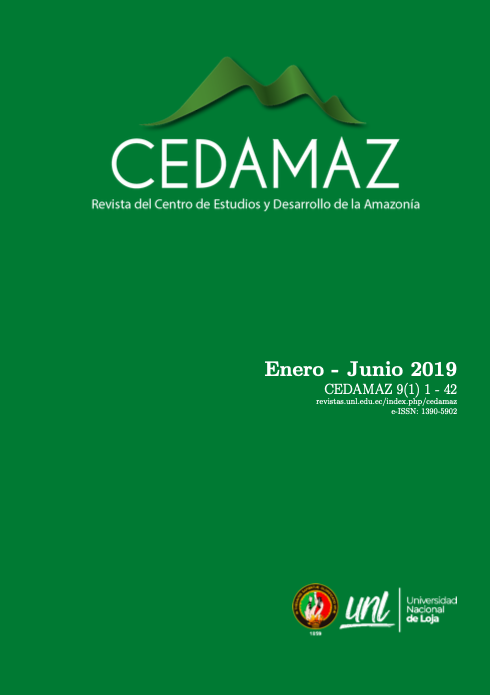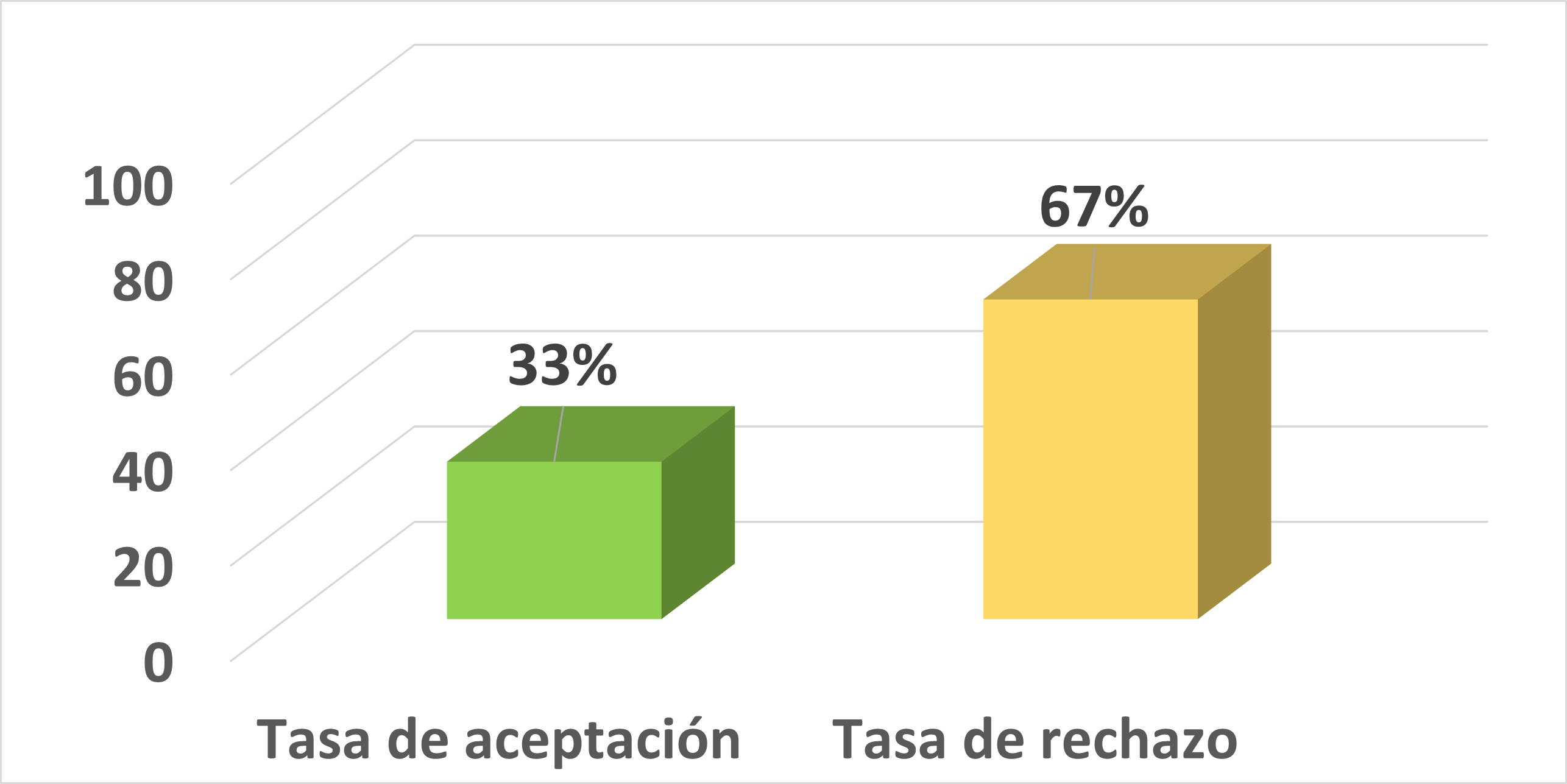Mutagenic and antimutagenic evaluation of total extracts of medicinal plants by the retromutation test in Salmonella typhimurium
Keywords:
Extractos metanólicos, Plantas medicinales, Test de Ames.Abstract
In various regions of the South of the Ecuador different plant species are used to treat a variety of ailments. Methanol extracts from plants used in traditional medicine in the province of Loja, were investigated with the objective of evaluating their possible potential mutagenic and antimutagenic using retromutation test in Salmonella typhimurium(Ames Test) with bacterial strains TA1535, TA1538, TA98 and TA100 (mutagenicity test), TA100 and TA98 (antimutagenicity test) in the absence of metabolic activation (-S9). Methanol extracts from the leaves of Baccharis latifolia and Callisia repens were positive for mutagenicity testing. Ludwigia peruviana was found to be strongly antimutagenic againts at least one of the mutagens tested. These results contribute to valuable data on the safe use of medicinal plants and their potential chemopreventive effects. Considering the excellent antimutagenic activities extracted from Ludwigia peruviana these extracts are good candidate source of chemopreventive agent. However, Baccharis latifolia and Callisia repens showed mutagenic activity, suggesting caution in their use. The mutagenic and antimutagenic activity of these species indicates that they are valuable resources that should be conserved and considered for future research.References
Ames, Bruce N. Margie Profet, Lois Swirsky Gold. 1990. Sustancias Químicas Naturales y Sintéticas: Toxicología Comparativa. Proceedings of National Academy of Sciences, USA. http://jimlund.org/blog/pics/pnas01044-0440.pdf
Bourdy,G. Chavez de Michel, L.R., Roca-Coulthard, A., 2004. Pharmacopoeia in a shamanistic society: the Izoceño-Guaraní (Bolivian Chaco), Journal of Ethnopharmacology 91, 189–208. DOI: 10.1016/j.jep.2003.09.013
De Feo Vincenzo, 2004. Ethnomedical field study in northern Peruvian Andes with particular reference to divination practices, Journal of Ethnopharmacology 85, 243–256. https://doi.org/10.1016/S0378-8741(03)00017-5
Espanha, L. G., Resende, F. A., Neto, J. D. S. L., Boldrin, P. K., Nogueira, C. H., de Camargo, M. S., ... & Varanda, E. A. 2014. Mutagenicity and antimutagenicity of six Brazilian Byrsonima species assessed by the Ames test. BMC complementary and alternative medicine, 14(1), 182. https://www.ncbi.nlm.nih.gov/pmc/articles/PMC4052806/pdf/1472-6882-14-182.pdf
Elgorashi, E., Taylor, J., Maes, A., van Staden, J., De Kimpe, N., Verschaeve, L., 2003. Screening of medicinal plants used in South African traditional medicine for genotoxic effects, Toxicology Letters 143, 195-207
Ikuma N, M.E., Henrique P, M., Izilda B, F., Longo, M., Primila C, C.R., Campaner dos Santos, L., Varanda, E.A., 2006. Investigation of genotoxic and antigenotoxic activities of Melampodium divaricatum in Salmonella typhimurium. Toxicology in vitro 20, 361-366. DOI: 10.1016/j.tiv.2005.08.012
Lagarto Parra A, Silva Yhebra R, Guerra Sardiñas I, Iglesias Buela L, Comparative study of the assay of artemia salina and the estimate of the medium lethal dose (LD50) in mice in order to determine oral acute toxicity of plant extracs. Drug Research and Development Center. CIDEM, Biologic Researc Departament 17. No 6208 e/52 y 64 Playa, Ciudad de la Habana, Cuba. https://doi.org/10.1078/0944-7113-00044
Lakshmi,B. T.A. Ajith, Nayana Jose, K.K. Janardhanan. 2006. Antimutagenic activity of methanolic extract of Ganoderma lucidum and its effect on hepatic damage caused by benzo[a]pyrene. Journal of Ethnopharmacology 107, 297–303. 10.1016/j.jep.2006.03.027
Leonti M, Sticher O, Heinrich M, 2003. Antiquity of medicinal plant usage in two Macro-Mayan ethnic groups (México), Journal of Ethnopharmacology. 88, 119–124. https://www.researchgate.net/publication/5277346_Antiquity_of_medicinal_plant_usage_in_two_Macro-Mayan_ethnic_groups_Mexico
Mortelmans K, Zeiger E, 2000. The Ames Salmonella/microsome mutagenicity assay, Mutation Research. 455, 29-60.
Ohtsuka M., Fukuda, K., Yano, H., Kojiro, M., 1995. Effects of nine active ingredients in Chinese herbal medicine Sho-saiko-to on 2-(2-furyl)-3-(5-nitro-2-furyl) acrilamida mutagenicity. Jpn. J Cancer Res: 86, 1131-1135.
Ordóñez Vivanco, Paola. Vega Esparza, Mónica. Malagón Avilés, Omar, 2006 Phytochemical study of native plant species used in traditional medicine in Loja Province. (Estudio Fitoquímico de Especies Vegetales Nativas utilizadas en la Medicina Tradicional de la Provincia de Loja) (on line, citado marzo 2006). Disponible en World Wide Web: http://www.lyonia.org/downloadPDF.php?pdfID=2.402.1
Park, Kun-Young., Jung, Geun-Ok., Lee, Kyung-Tae., Choi, J., Choi Moo-Young., Kim, Gab-Tae., Jung, Hyun-Ju., Park, Hee-Juhn., 2004. Antimutagenic activity of flavonoids from the heartwood of Rhus verniciflua. Journal of Ethnopharmacology 90, 73–79.
Pereira M, R., Batistuzzo de Medeiros, R., Da Silva Dias, C., Barbosa-Filho, J.M., Agnez-Lima, L., 2003. Evaluation of mutagenic potential of yangambin and of the hydroalcoholic extrac of Ocotea duckei by the Ames test. Mutation Research 536, 117-120.
Ramos, A., Visozo, A., Piloto, J., García, A., Rodríguez, C.A., Rivero, R.., 2003. Screening of antimutagenicity via antioxidant activity in Cuban medicinal plants. Journal of Ethnopharmacology 87, 241-246.
Reid, K.A., Maes, J., Maes, A., van Staden, J., De kimpe, N., Mulholland, D.A., Verschaeve, L., 2006. Evaluation of the mutagenic and antimutagenic effects of South African plants. Journal of Ethnopharmacology 106 (1) 44-50
Resende Flávia Aparecida., Munari Carla Carolina., Bentes Monteiro Neto Moacir de Azevedo., Denise Crispim Tavares., Jairo Kenupp Bastos., Ademar Alves da Silva Filho., Eliana Aparecida Varanda. 2012. Comparative Studies of the (Anti) Mutagenicity of Baccharis dracunculifolia and Artepillin C by the Bacterial Reverse Mutation Test. Journal Molecules 17, 2335-2350
Singh A.K, Raghubanshi A.S, Singh J.S, 2002. Medical ethnobotany of the tribals of Sonaghati of Sonbhadra district, Uttar Pradesh, India, Journal of Ethnopharmacology 81, 31-/41.
Sponchiado, G., Adam, M. L., Silva, C. D., Soley, B. S., de Mello-Sampayo, C., Cabrini, D. A., ... & Otuki, M. F. (2016). Quantitative genotoxicity assays for analysis of medicinal plants: A systematic review. Journal of ethnopharmacology, 178, 289-296.
Verschaev L. Kestens V, Taylor J.L.S, Elgorashi E.E, Maes A, Van Puyvelde L, De Kimpe N, Van Staden J, 2004. Investigation of the antimutagenic effects of selected South African medicinal plant extracts. Toxicology in vitro 18, 29-35
Wall , M., Wani, M., Hughes, T., Taylor, H., 1988. Plant antimutagenic agents. General bioassay and isolation procedures. J. Natl. Prod., 51, 866-873.
Zaragoza, T. et al. 2004. Proyecto PFN-0133. Bioactividad de aceites esenciales y extractos de plantas medicinales y aromáticas de la región sur del Ecuador. Ecuador, FUNDACYT- UTPL
Downloads
Published
How to Cite
Issue
Section
License
Copyright (c) 2020 CEDAMAZ

This work is licensed under a Creative Commons Attribution-NonCommercial-NoDerivatives 4.0 International License.
Those authors who have publications with this journal, accept the following terms:
- After the scientific article is accepted for publication, the author agrees to transfer the rights of the first publication to the CEDAMAZ Journal, but the authors retain the copyright. The total or partial reproduction of the published texts is allowed as long as it is not for profit. When the total or partial reproduction of scientific articles accepted and published in the CEDAMAZ Journal is carried out, the complete source and the electronic address of the publication must be cited.
- Scientific articles accepted and published in the CEDAMAZ journal may be deposited by the authors in their entirety in any repository without commercial purposes.
- Authors should not distribute accepted scientific articles that have not yet been officially published by CEDAMAZ. Failure to comply with this rule will result in the rejection of the scientific article.
- The publication of your work will be simultaneously subject to the Attribution-NonCommercial-NoDerivatives 4.0 International (CC BY-NC-ND 4.0)









